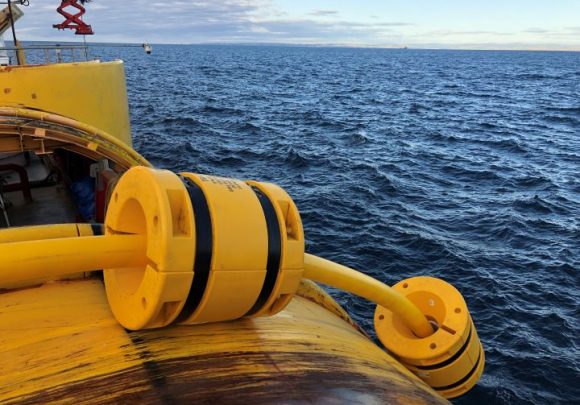- Products
- Impact & abrasion protection
- Bend & fatigue protection
- Buoyancy & floats
- Downhole protection
- Guides & clamps
- Seabed stability
- Sensors & monitoring
- Sectors
- About us
- Knowledge
- News
- Careers
- Contact
Situated in the South Caspian Sea, off the coast of Azerbaijan, the Shah Deniz gas field stands at a depth of 600 meters, covering approximately 860 square kilometres. There is a growing requirement in deepwater applications such as this for flowlines to perform under high temperature and high pressure conditions. Large cyclic changes can cause expansion of the flowline, resulting in lateral or upheaval buckling. At a depth of 600 metres / 1,968 feet below surface, these flowlines come under significant force.
Contracted by oil and gas company, BP, CRP Subsea (formerly Trelleborg Offshore UK) supplied its foam buoyancy systems for the prestigious second phase development of the Shah Deniz field.
CRP Subsea buoyancy modules assist in mitigating the large forces of cyclic changes. By reducing the self-weight of the flowline and friction against the seabed, a span of lower resistance is established along the flowline, enabling buckling to occur in known and controlled conditions. The buoyancy package was manufactured using CRP Subsea’s high temperature syntactic foam.
With a design life of 30 years, DBMs (Distributed Buoyancy Modules) are typically used between a subsea structure and a surface vessel or platform. A specialist clamping solution securely attaches the DBM assembly to the desired location on a riser, allowing the DBMs to be fitted at any point along the length of the pipeline. The buoyancy segments are assembled to mechanically lock around the clamp and are secured with circumferential straps.

“With a growing requirement for flowlines to perform under high temperature and high pressure conditions in deepwater applications, large cyclic changes can cause expansion of the flowline. At a depths of 600 metres or 1,968 feet below the water’s surface, these flowlines come under significant force, resulting in lateral or upheaval buckling of the flowline.
“However, CRP Subsea buoyancy modules help mitigate the buckling by reducing the self-weight of the flowline as well as the friction against the seabed. With the buoyancy modules in place, a span of lower resistance is established along the flowline, enabling the buckling to occur in known, controlled and more predictable conditions.”
Lee Roskell, Proposals Manager at CRP Subsea (formerly Trelleborg Offshore UK)